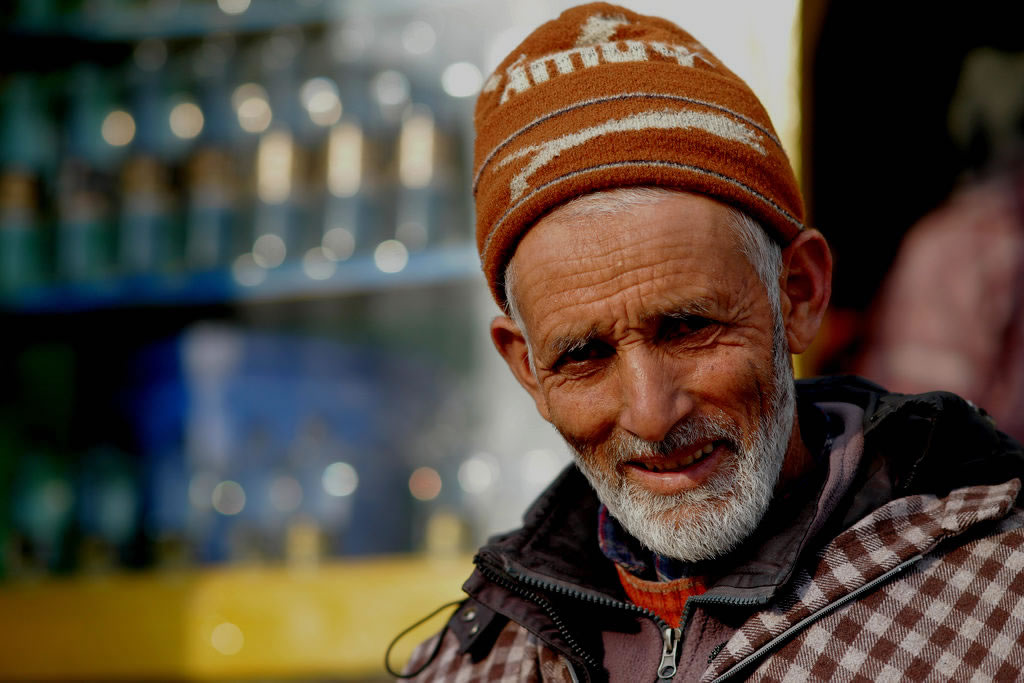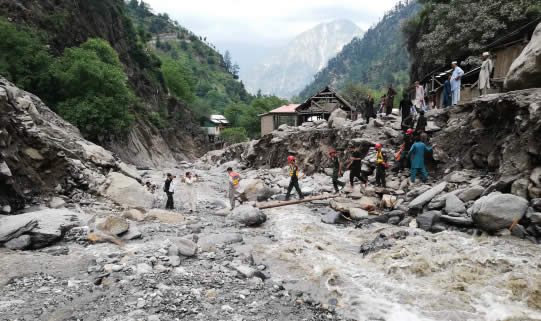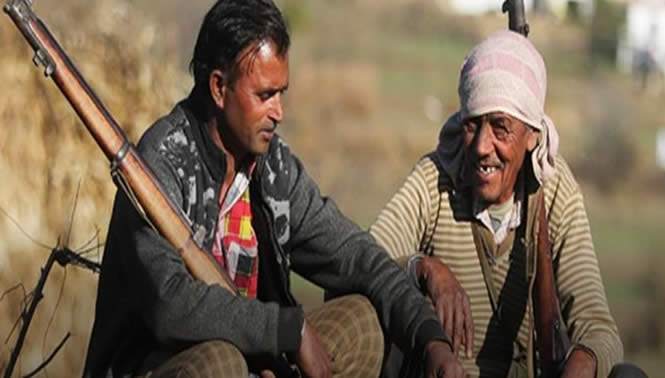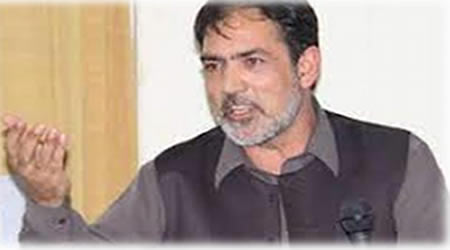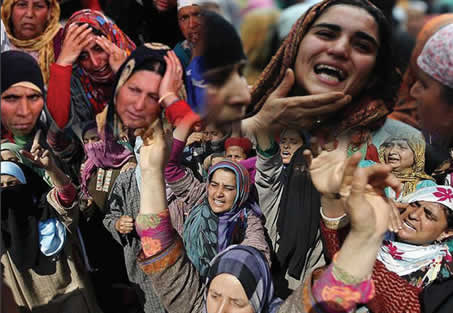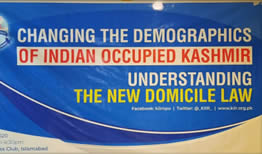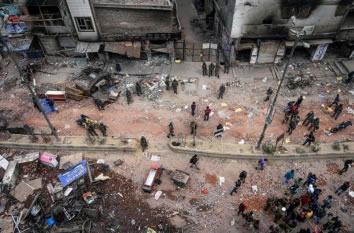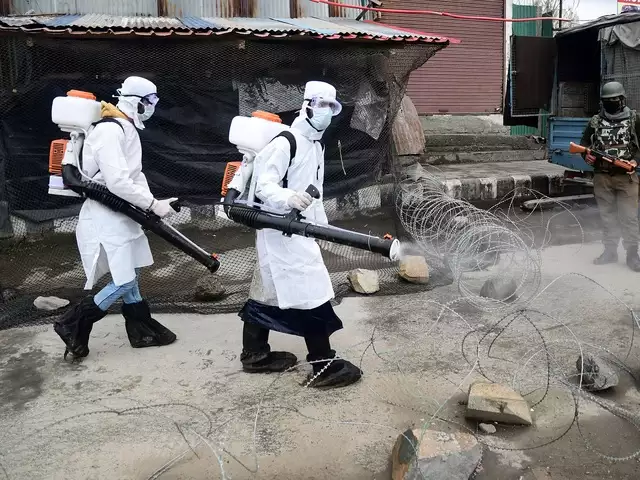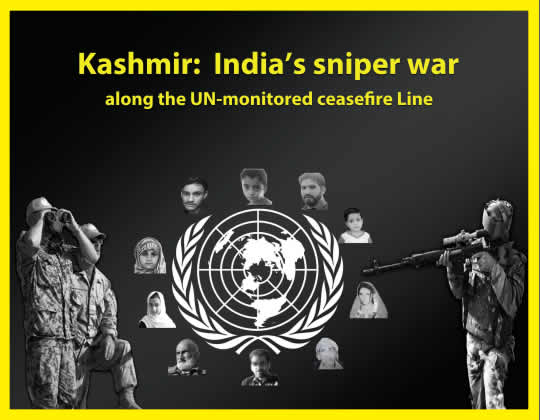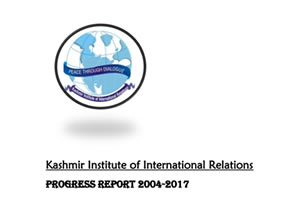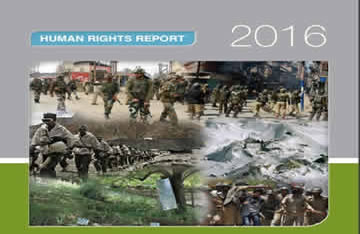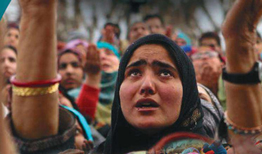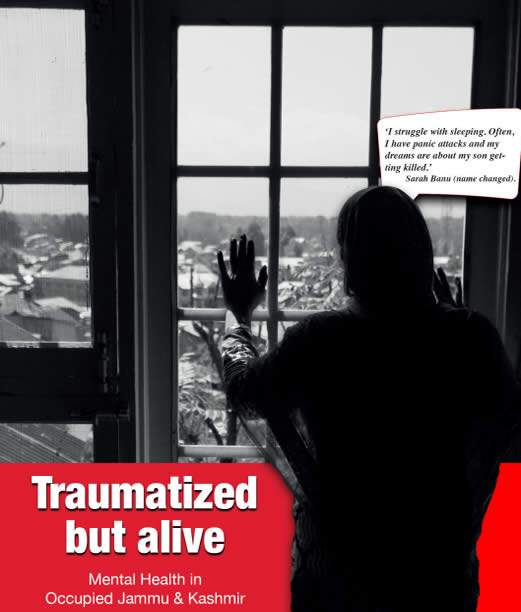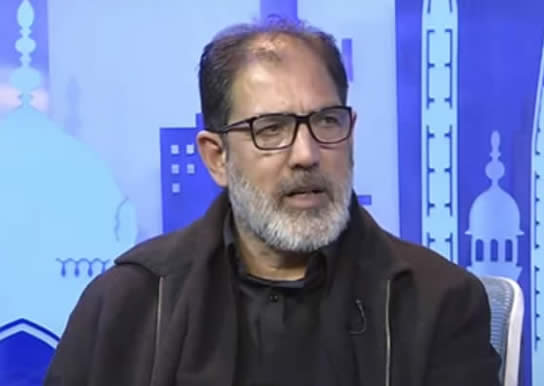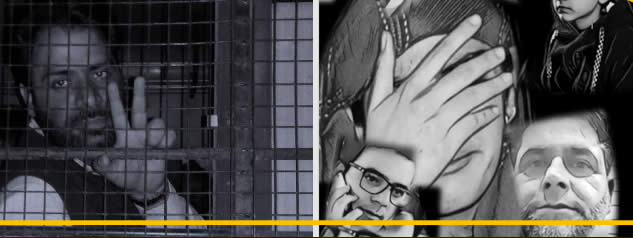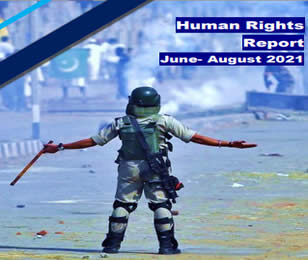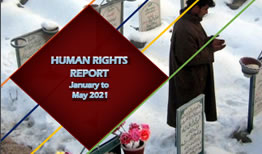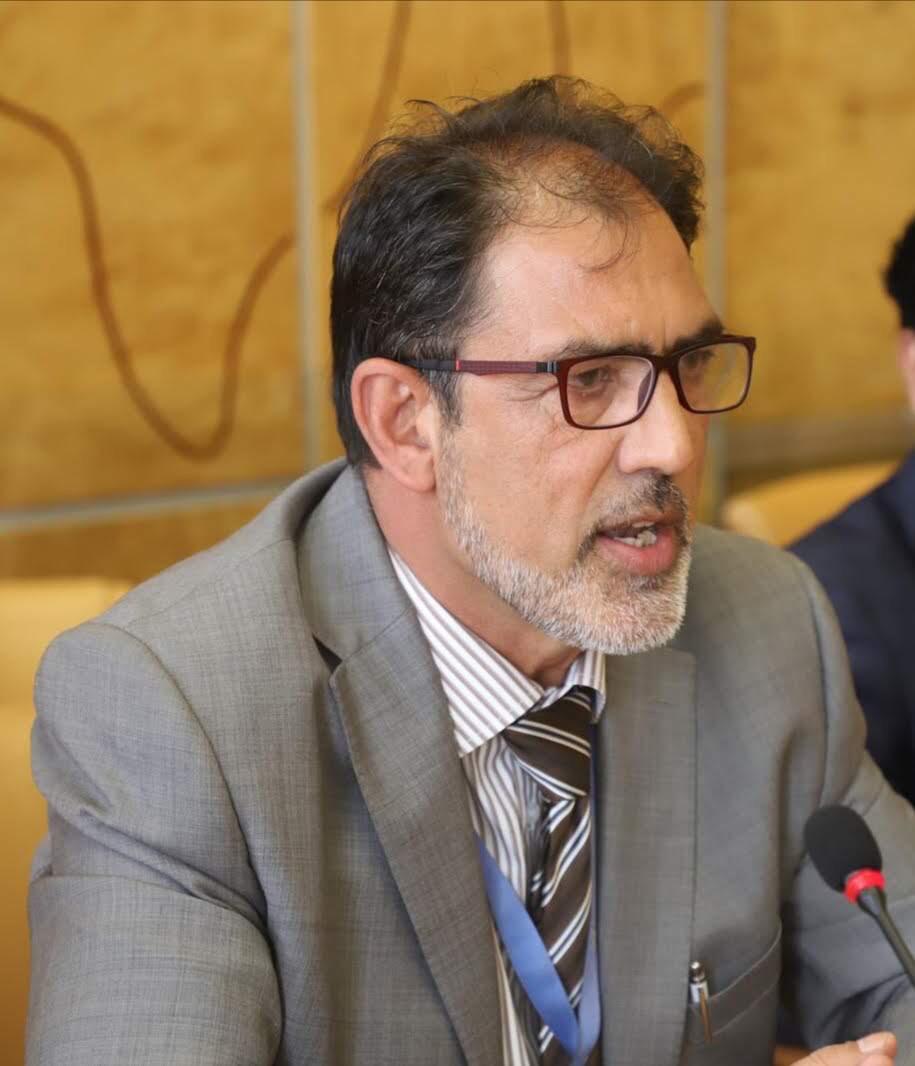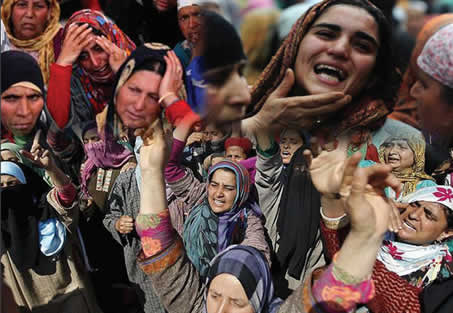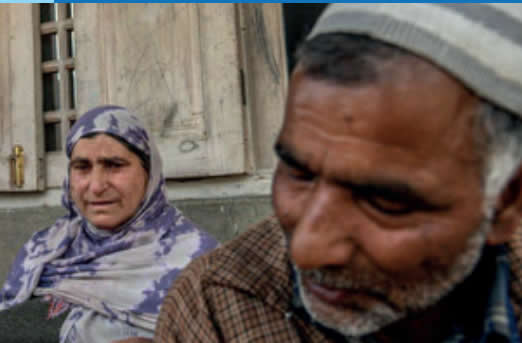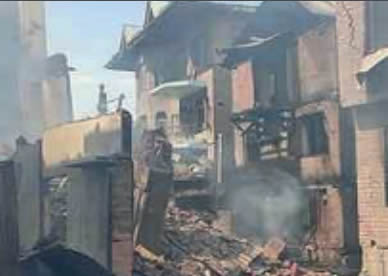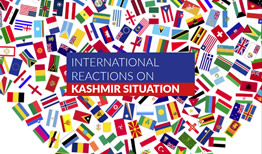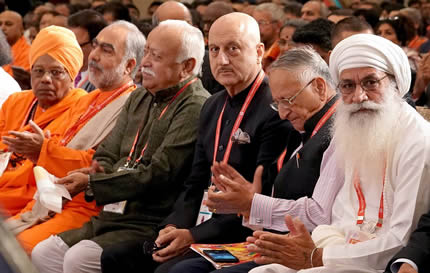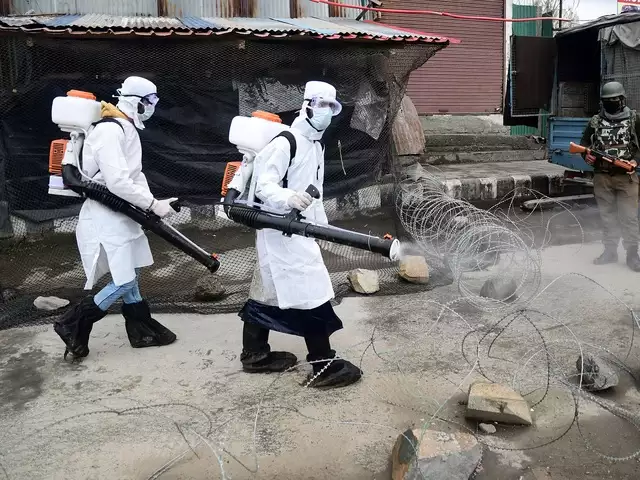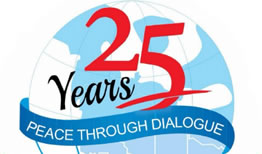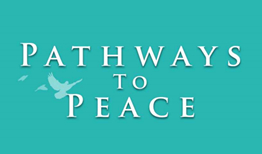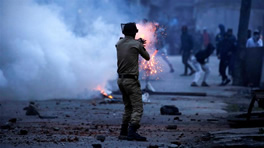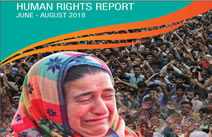Human Rights Report
Human Rights Report
INTRODUCTION
Indian-occupied Jammu and Kashmir (IOJK) continues to witness systemic human rights violations, particularly targeting the Muslim-majority population. These violations range from arbitrary detentions, enforced disappearances and collective punishments to the stifling of civil liberties through prolonged communication blackouts, surveillance and media censorship. State institutions operate under a legal architecture, such as the Armed Forces Special Powers Act (AFSPA), Unlawful Activities Prevention Act (UAPA) and Public Safety Act (PSA), that institutionalize impunity.
International human rights watchdogs including Amnesty International and Human Rights Watch have repeatedly expressed concern over India’s failure to ensure justice, accountability and the right to dissent in the region. Since the abrogation of Article 370 on August 5, 2019, IoJK had already been transformed into an open- air prison, marked by mass surveillance, restricted movement, and the steady erosion of civil liberties.
But after April 22, 2025, the situation descended into a living hell, as the Indian state escalated its settler- colonial project through aggressive land seizures, home demolitions, and punitive displacement campaigns that have devastated civilian life and deepened the assault on Kashmiri identity. After the April 22 attack, India expanded its crackdown under the guise of counterterrorism. Entire Muslim populations, especially Kashmiris, were indiscriminately profiled and criminalized. The state weaponized the incident to reinforce its false narrative of terrorism and used it as a pretext to intensify its coercive control. This moment allowed India to delegitimize Kashmiri demands for self-determination and deepen its colonial project under the veneer of national security.
The April 2025 Pahalgam incident marked a dangerous escalation in India’s securitized narrative. Without presenting forensic or credible international evidence, the Indian government instantly accused Pakistan of orchestrating the killings. This knee- jerk securitization reflects a pattern where Kashmir becomes the strategic theatre for India’s domestic political messaging and Pakistan becomes the convenient external scapegoat. Such securitized blame not only bypasses international legal norms regarding evidence-based attribution but also fosters a hostile socio-political environment, particularly against Kashmiri Muslims.
In the immediate aftermath, Muslims across Indian cities, especially Kashmiris, became victims of targeted hate campaigns, xenophobic attacks and threats by right-wing vigilantes. This reflects a classic case of collective punishment, a violation of both international humanitarian law and human rights law. The state’s inability or unwillingness to prevent or punish such vigilantism signals complicity. Kashmiris were not only demonized rhetorically in political discourse and mainstream media but were also materially displaced, evicted from hostels, refused services and physically assaulted.
This convergence of state-led securitization and societal discrimination constitutes a dangerous ethnicization of security. The Pahalgam narrative has hardened India’s already majoritarian approach towards IOJK. Kashmiri Muslim identity itself is now treated as a security threat, violating the principle of non-discrimination enshrined in Article 26 of the International Covenant on Civil and Political Rights (ICCPR). The structural erosion of political representation, particularly after the 2019 abrogation of Article 370, has only exacerbated this exclusion. The post-Pahalgam atmosphere reflects a shift from authoritarian control to ethnonationalist subjugation, where political dissent, ethnic identity and religious affiliation intersect to produce structural violence.
India’s postcolonial statecraft in IoJK is increasingly premised on maintaining territorial sovereignty at the expense of human security. The legitimacy of the state is manufactured through enemy construction, where Kashmiris become the internal ‘Other’ and Pakistan the external ‘foe.’ The international community must not remain silent. The UN Human Rights Council must press India to allow independent investigations into post-Pahalgam incidents and broader systemic abuses in IOJK. Silence and inaction will only embolden a trajectory where lawlessness is cloaked in legality and where occupation masquerades as governance.
METHODOLOGY
This report draws on secondary sources, including verified news reports, official statements, human rights documentation and legal texts. Data was gathered from regional and national media outlets, civil society reports and publicly accessible databases between January and May 2025. All incidents were cross-referenced for consistency and credibility. The analysis draws on international human rights law, critical security studies and decolonial theory to interpret the findings. The methodology prioritizes accuracy, transparency and a grounded interpretive framework suitable for political and legal analysis of state violence in conflict zones.
EXTRAJUDICIAL KILLINGS
India’s occupation of Jammu and Kashmir has entered a new phase of brutality under Narendra Modi’s regime, marked by systematic extrajudicial killings, fake encounters and false flag operations. Since the orchestrated Pahalgam incident on April 22, 2025, Indian forces have intensified their campaign of terror, martyring at least five innocent youth, including Imtiaz Ahmed Magray, arrested during a search operation, tortured, killed and then discarded in a drain, while Indian media falsely labelled him a terrorist. This is not an anomaly but a calculated strategy to instil fear, suppress resistance and project a false narrative of counterterrorism. From Altaf Lalli in Bandipora to Ghulam Rasool Magray in Kupwara, innocent Kashmiris are being exterminated while the world watches in silence. The staggering death toll, 1042 Kashmiris killed since August 2019 and 96,441 since 1989, exposes the hollowness of India’s claim of bringing peace to the region.
India’s crimes violate every principle of the UN Charter and international human rights law. Yet the criminal silence of international institutions and Western governments has emboldened Delhi to continue its genocidal policies with impunity. Occupied Kashmir has become the world’s largest open-air prison, where homes are raided at night, accountable and pushing for the resolution of the Kashmir dispute in line with international law. Inaction will only deepen the suffering and risk dragging three nuclear powers into further instability. Kashmir is not just a regional crisis, it is a test of global morality.
CHRONOLOGICAL OVERVIEW OF INCIDENT
ARBITRARY DETENTIONS
PRE-PAHALGAM (JANUARY 2025 – APRIL 22, 2025):
From January to April 2025, IoJK witnessed a systematic crackdown on political dissent and digital expression. This period reflected a securitization approach, where the state framed non-violent activities as security threats. Multiple individuals were arrested under the Unlawful Activities (Prevention) Act (UAPA) for pro-freedom posts, especially those referencing Yasin Malik. This criminalization of symbolic expression reveals India’s attempt to delegitimize resistance narratives. Social media became a surveillance battlefield, monitored for what the state terms “anti-national” sentiments. Religious and political leaders, including Mirwaiz Umar Farooq and Agha Hassan Moosvi, were subjected to preventive house arrest. Their attempt to organize a meetingon the Waqf Amendment Act was blocked.
This demonstrates India’s intent to neutralize intermediary political actors and dismantle alternative governance structures, classic counter- hegemonic suppression. Arrests of Hurriyat activists calling for a UN plebiscite were framed as threats to territorial integrity. Their detention under UAPA shows India’s realist concern with sovereignty, but violates international legal norms under the ICCPR. Such actions blur the line between internal security and suppression of self- determination claims grounded in international law. The PSA was invoked to detain individuals like Mohammad Rafi Sheikh without trial. PSA’s use aligns with authoritarian legalism, enabling prolonged detention without accountability. This reflects a governance model marked by exception rather than rule of law.
The pre-Pahalgam environment was defined by ontological insecurity. India used legal tools not just to control violence, but to assert its identity over a contested political space. Dissent was reframed as deviance; political expression as potential insurgency.
POST-PAHALGAM (APRIL 23–27, 2025):
The April 22 Pahalgam attack, which killed 27 tourists, triggered an immediate and forceful state reaction. Without furnishing verifiable evidence, Indian authorities hastily blamed Pakistan and alleged local, portraying the incident as part of a transnational security threat. This securitized framing justified sweeping crackdowns and militarized operations across IoJK. Between April 24 and 27, more than 2,500 individuals were detained, including at least 175 in Anantnag. These mass detentions exemplified collective securitization, where entire communities were treated as potential threats. Legal transparency was largely absent, most detentions were labeled “under investigation,” with few specific FIRs. Arrests under the Unlawful Activities (Prevention) Act (UAPA), especially of alleged Over Ground Workers (OGWs) in Bandipora and Kulgam, were publicized as targeted operations but were conducted amid broad, indiscriminate sweeps.
The disproportionate use of force violated the principle of proportionality enshrined in international humanitarian law. Furthermore, the principle of individual legal accountability was undermined as detentions often lacked concrete charges. This erosion of due process marked a shift from procedural justice to arbitrary executive action. The digital sphere was simultaneously targeted. Individuals managing pro-freedom social media accounts were arrested for allegedly “promoting secessionism.” This reflects a broader digital authoritarianism, where expression in cyberspace is criminalized and dissent is redefined as deviance. The PSA was again invoked, notably on April 27, to detain individuals without trial, bypassing judicial oversight. The continued use of preventive detention signaled the state’s reliance on incarceration as a method of control rather than adjudication.
These post-attack detentions also had a performative dimension. Through mass arrests and sweeping operations, the Indian state sought to assert its sovereign authority both domestically and in the international arena. It attempted to frame its actions as legitimate counter-extremism while disregarding its obligations under international human rights treaties, including the International Covenant on Civil and Political Rights (ICCPR). Throughout this period, India’s conduct in IOK reflected authoritarian legalism, a mode of governance where legality is used not to protect rights, but to consolidate control. Arrests of Hurriyat activists, house raids and digital repression were framed as security measures but functioned as instruments of political subjugation.
The Indian state’s approach, rooted in realism and sovereignty-centric doctrines, neglects the core principle of self-determination, which remains central to the Kashmiri freedom struggle. Arbitrary detentions, far from ensuring security, entrench cycles of grievance, alienation and resistance. The use of law as a coercive apparatus rather than a rights-protecting framework undermines India’s democratic claims and exposes its failure to resolve the conflict through legitimate political engagement. Both the pre- and post-Pahalgam phases reflect a continuum of repression rather than two distinct periods. Violations of fundamental rights, including surveillance, arbitrary detentions and denial of free expression, were already entrenched. However, after April 22, the state’s tactics became overtly punitive and visibly driven by anti-Muslim hate.
Innocent Kashmiris were collectively punished and entire communities were vilified as threats. This intensification of securitized violence has exposed the structural nature of India’s hostility toward Kashmiris, making the crisis impossible to ignore. The international community is now witnessing, in real time, a regime of control that systematically dehumanizes a population demanding its right to self-determination
BAN ON POLITICAL DISSENT
Between January and May 2025, Indian authorities intensified their crackdown on political dissent in IOJK, employing legal and administrative measures to suppress opposition voices. In March, the central government invoked the UAPA to impose a five- year ban on the Awami Action Committee (AAC) and Jammu and Kashmir Ittihad-ul-Muslimeen (JKIM), alleging that these groups promoted secessionist activities and anti-India propaganda. This period also saw increased use of the PSA and UAPA to detain journalists, lawyers and activists without formal charges or trials, often relocating them to prisons outside Kashmir, thereby isolating them from their communities and legal support networks . Such actions have created a pervasive climate of fear, discouraging political engagement and stifling free expression.
The suppression extended to academic and public discourse, exemplified by the cancellation of a scheduled talk on “Kashmiriyat and Hyper- Majoritarianism” at Calicut University, citing concerns over national sensitivities . These developments underscore a systematic effort to silence dissent and curtail democratic freedoms in the region. These actions have drawn criticism from international bodies. Amnesty International and the United Nations have expressed concerns over the arbitrary detentions and suppression of dissent in IIOJK. The UK Parliament highlighted the alarming rate at which journalists are summoned and intimidated, creating a chilling effect on free speech.
The cumulative effect of these measures has transformed IIOJK into a region where expressing political opinions, practicing journalism, or advocating for human rights can lead to severe repercussions. The international community must recognize and address these violations to uphold the principles of democracy and human rights.
SIEGE AND SEARCH OPERATIONS
Imagine sitting at home in the early morning when boots storm your door, not once, but repeatedly, as if your life is suspended in a loop of collective punishment. There is no warning, no warrant, no reason. Just force, intrusion and fear. These are not isolated actions; this is a structure of violence designed to erase normalcy and impose permanent psychological siege. Kashmiris today are denied not only freedom of movement, but freedom from fear. Under the pretext of security, they are being robbed of home, dignity, mental peace and any sense of future.
Before the April 22 Pahalgam incident, Kashmir was already reeling under a heavy regime of cordon- and-search operations. From February 1 to April 21, 2025, at least 28 major search operations and house raids were recorded across Poonch, Rajouri, Kupwara, Shopian, Budgam, Ganderbal, Baramulla, Anantnag, Srinagar, Reasi, Kulgam, Udhampur and Doda. These included sweeping crackdowns such as the multi-district raids on February 22 in Jammu, Kathua, Rajouri, Poonch and Kishtwar and targeted operations against civilian residences in Sopore, Anantnag and Srinagar on March 25 and 29. But after April 22, the scale and ferocity of these operations escalated drastically.
In just three weeks, over 2,800 youth were detained and house raids became an everyday assault, particularly in Srinagar, over 65 homes were raided in localities like Batamaloo, Safakadal, Bemina, Lal Bazar, Zadibal and Shalteng. Entire villages in Pulwama, Shopian, Kulgam and Kupwara have been locked down, searched and subjected to vandalism, with reports of household belongings smashed, cash and jewelry looted and documents seize.
CHRONOLOGY OF SIEGE AND SEARCH OPERATIONS
KASHMIR’S DEVELOPMENT DRIVE: A COVER FOR DISPOSSESSION ?
Since August 2019, India has launched several development projects in Jammu and Kashmir. These include railways, highways, power plants and a new National Institute of Technology (NIT) campus. The Indian government claims these will boost jobs and growth. But many Kashmiris see it differently. Form them, this is not development, it is dispossession. Farmers in Pulwama and Anantnag are being asked to give up their land. In some cases, entire orchards are being taken. The land is acquired under colonial- era laws like the Land Acquisition Act of 1894, which offer little protection. The Right to Fair Compensation and Transparency in Land Acquisition, Rehabilitation and Resettlement Act, 2013 (RFCTLARR), which applies in the rest of India, does not apply fully in Kashmir.
After the abrogation of Article 370, over 150 state laws were repealed. This removed legal safeguards for landowners. According to Al Jazeera, over 600 acres are being taken in Anantnag alone, double the land needed. Locals say they were not consulted. Many have not received compensation. Some have gone to court, but the cases are slow. Without proper legal aid, most people do not know their rights. Railway projects are also being pushed through. The new Banihal-Baramulla line is expected to help move troops faster. This is a serious concern in a region already heavily militarised. The AFSPA gives the Indian army sweeping powers. The Jammu and Kashmir Coalition of Civil Society (JKCCS) has documented over 70,000 deaths and thousands of enforced disappearances since the late 1980s.
New infrastructure in this context is not neutral. It strengthens military control. Outside Kashmir, Kashmiris also face hate and violence. In states like Himachal Pradesh and Uttarakhand, Kashmiri traders are attacked. Groups chant slogans like “Go back to Kashmir.” These incidents increased after the 2019 Pulwama attack. The state has done little to protect these citizens. International law offers protection against forced land acquisition. Article 17 of the Universal Declaration of Human Rights says no one should be arbitrarily deprived of property. Article 11 of the ICESCR, to which India is a party, guarantees the right to adequate housing and livelihood. The UN has raised concerns before. In 2018 and 2019, the UN Office of the High Commissioner for Human Rights (OHCHR) released two reports on Kashmir.
Both highlighted human rights abuses, including land confiscation. But India rejected those reports. It claims Kashmir is an “internal matter.” Yet, international law does not stop at borders. When rights are violated, the world must speak up. Kashmiris need their voices heard, their rights protected and their land respected. Silence or selective engagement only emboldens impunity. International legal mechanisms must be activated to investigate unlawful land seizures, demographic manipulation and militarizeddevelopment.
THE SUPPRESSION OF MEDIA IN IOK
Media freedom in Jammu and Kashmir has collapsed under India’s repressive security framework. Since the Pahalgam attack on April 22, 2025, Kashmiri journalists have been targeted through harassment, travel bans and fabricated charges. A UK parliamentary debate revealed that 90% of Kashmiri journalists had been summoned by Indian agencies, primarily to intimidate them. Former Chief Minister Mehbooba Mufti confirmed that at least 22 journalists are barred from travelling abroad. India’s draconian laws like UAPA allow indefinite detention without trial. Many journalists are arrested under vague charges or detained provisionally for years, especially those covering human rights abuses or environmental issues. In contrast, Pakistan’s media, despite facing censorship, remains more vibrant with over 114 TV channels, 1,000 newspapers and criticism of state institutions being routine.
The Committee to Protect Journalists (CPJ) raised alarm over India’s silencing of media after the April 22 incident. Journalist Sanjay Sharma’s YouTube channel with 7.3 million subscribers was blocked; he had to seek redress from the Supreme Court. In Kathua, journalist Rakesh Sharma was physically assaulted by BJP supporters while reporting. Commentators like Neha Singh Rathore, Dr. Medusa and Shamita Yadav now face criminal investigations or FIRs for social media posts deemed “anti- national.” India also blocked 16 Pakistani YouTube channels and sent a warning to BBC India for using the term “militant attack.” This reflects a broader pattern, silencing critical voices under the pretext of national security. Online trolls affiliated with the ruling party routinely threaten dissenting journalists, as documented by Swati Chaturvedi in I Am a Troll.
Reporters Without Borders (RSF) recently confirmed that journalists in Kashmir face police harassment and prolonged detentions, especially when reporting on sensitive issues. With 19 journalist murders still unsolved in India, a chilling effect has engulfed the media. India’s claim to being the “world’s largest democracy” is hollow if it cannot tolerate press scrutiny. The suppression of journalism in Kashmir is not just an attack on free speech—it is an assault on truth .
ARBITRARY TERMINATIONS IN J&K
Between January and May 2025, the Lieutenant Governor’s administration in Jammu and Kashmir terminated the services of at least 15 government employees by invoking Article 311(2)(c) of the Indian Constitution, which authorizes dismissal without the necessity of a formal inquiry if such action is deemed necessary in the interest of the “security of the state.” These terminations, spanning January, February, March and April, reflect a marked intensification of the Indian state’s securitized approach to governance in Jammu & Kashmir.
Drawing from intelligence dossiers and opaque administrative reports, these actions circumvent the fundamental norms of procedural justice, thereby institutionalizing a system where suspicion and accusation alone are treated as sufficient grounds for punitive state action. This pattern of administrative behavior refer to as exceptional governance, where liberal democratic norms are suspended in favor of authoritarian practices justified through a discourse of national security.
In this framework, the Kashmiri public servant is increasingly constructed as a potential internal enemy, vulnerable to dismissal not through legal conviction, but through unverified associations and unchallenged security narratives. Such actions violate not only India’s constitutional guarantees of due process and equality before the law, but also breach international human rights norms regarding the right to work, presumption of innocence and protection against arbitrary state action as articulated in the ICCPR (International Covenant on Civil and Political Rights), to which India is a state party.
Furthermore, the implications of these terminations extend beyond the personal trauma inflicted upon the dismissed individuals and their families, many of whom report harassment, surveillance and public vilification. These moves also serve a broader ideological purpose: the gradual de-Kashmirization of the public sector workforce. Several of the dismissed employees, including schoolteachers, forest workers, police personnel and PHE linemen, were from economically marginalized communities and had no known history of militancy.
Their abrupt removal reinforces the political economy of dispossession and marginalization within Kashmir’s hybrid conflict setting, where state violence operates through legal-bureaucratic instruments rather than overt military action alone. From a conflict resolution standpoint, this trend exacerbates the already fragile trust between the Kashmiri population and the Indian state. Instead of fostering reconciliation and inclusive governance
key pillars in liberal peacebuilding frameworks, the use of Article 311(2)(c) institutionalizes fear, deepens alienation and undermines participatory state-building. Opposition parties such as the National Conference and the PDP have called these dismissals arbitrary and unconstitutional, pointing out that even under the new electoral mandate, the post-2019 dispensation has failed to restore democratic accountability.
These dismissals represent more than isolated administrative decisions, they are emblematic of a structural shift in state-citizen relations in Kashmir. The weaponization of security discourse and denial of legal recourse threatens to reconfigure the social contract itself, reducing citizenship to a conditional status predicated on unquestioned loyalty and compliance. Such practices not only violate domestic constitutional norms but also contradict India’s claims to democratic legitimacy and its obligations under international law.
RELIGIOUS BANS IN IOK: A SYSTEMATIC ASSAULT ON MUSLIM IDENTITY
From January to May 2025, the Indian government’s actions in IoJK reflect a coordinated and escalating campaign to suppress religious freedoms and erase Islamic institutions. Under the guise of security and governance, the Bharatiya Janata Party (BJP)-led regime has targeted Muslim religious practices, literature and leadership in clear violation of Articles 25 and 26 of the Indian Constitution, which guarantee the right to religious freedom and the management of religious affairs. The passage of the Waqf Amendment Bill 2025 Date Name of Employee Designation Nature of Allegation 15 Feb 2025 Firdous Ahmad Bhat Police Constable Terminated on unproven allegations of involvement in activities deemed prejudicial to state security. No formal charges or conviction presented publicly.
Accused of ideological affiliations and indirect associations. No legal evidence or court ruling has corroborated the claims used for his dismissal. is central to this offensive. Widely condemned by Kashmiri political and religious leaders, including the All Parties Hurriyat Conference (APHC) and Tehreek-e-Khawateen Kashmir (TKK), the bill facilitates state control over Waqf properties, mosques, seminaries, orphanages and community institutions, undermining the autonomy of Muslim religious life. This move is seen as a Hindutva- driven attempt to subjugate Muslim institutions under the banner of “regulatory reform,” paving the way for appropriation and depoliticization of Islamic endowments. Religious processions and observances have also come under attack. On March 23, 2025, the traditional Yaum-e-Ali procession in Baramulla’s Mirgund area was banned, with Maulana Masroor Abbas Ansari placed under house arrest.
The administration sealed Imambargah Hazrat Abbas and other religious venues, preventing night prayers during the sacred Shab-e-Qadr, provoking outrage within the Shia community. This followed the banning of Ittehad-ul-Muslimeen, the organization historically responsible for the event, part of a broader strategy to criminalize Shia mobilization and marginalize sectarian identities within Islam that are politically vocal.
The attack on religious literature has further exacerbated fears of an ideological purge. In early 2025, Indian police in Srinagar confiscated over 650 books authored by Abul A’la Maududi and pro-freedom leader Syed Ali Gilani. Citing links to “banned organizations,” the state sought to curtail intellectual traditions deeply embedded in Kashmiri religious and political consciousness. Prominent voices like MP Ruhullah Mehdi condemned this as a dangerous overreach: “Will the state now dictate what Kashmiris read, learn and believe?”
These developments are not isolated acts but form part of a calculated policy to suppress Muslim identity and resistance in Kashmir. The convergence of religious suppression, legal authoritarianism and political imprisonment points toward an emerging apartheid-like regime, where religious freedom is weaponized to silence dissent. The international community must recognize these bans for what they are: an assault on a people’s right to believe, express and exist.
SYSTEMATIC SEIZURE AND DEMOLITION OF CIVILIAN PROPERTIES IN KASHMIR
Since the start of 2025, Indian authorities in IOJK have intensified a campaign of property confiscations and demolitions, targeting ordinary civilians without legal justification or recourse. Homes and ancestral lands have been seized or destroyed under opaqueprocedures, with families forcibly evicted, often in the dead of night. This aggressive policy reflects a broader colonial logic aimed at dispossession, demographic engineering, and the erasure of Kashmiri identity, hallmarks of settler-colonial strategies historically used to suppress indigenous populations. The pattern of punitive demolitions and arbitrary seizures raises urgent questions about the abuse of state power and the systematic dismantling of civilian life in IOJK.
LEGAL AND HUMANITARIAN CONCERNS
These demolitions and seizures have been carried out without issuing show-cause notices, violating national legal standards and Supreme Court guidelines that mandate a minimum 15-day notice period and a hearing before any eviction or demolition, as per Article 21 of the Indian Constitution, which guarantees the right to shelter. Affected families received no prior warning, no opportunity to contest the demolitions, and no compensation for their loss or for damage caused to neighboring properties. The immediate consequence is severe human suffering: families are forced to live in temporary shelters, often with only the clothes on their backs. Many elderly members and children have been left vulnerable without access to basic necessities or support systems. The demolition campaign has also intensified social alienation and fostered deep mistrust between local communities and authorities.
Such actions raise profound legal and ethical questions regarding collective punishment and due process. The absence of transparency, failure to follow judicial mandates, and lack of compensation further aggravate the humanitarian crisis in Kashmir. Calls have been made by political leaders and civil society figures urging authorities to halt these demolitions, respect legal safeguards, and ensure protection of civilian rights
CHRONOLOGY OF SIEGE AND SEARCH OPERATIONS
Related Reports
